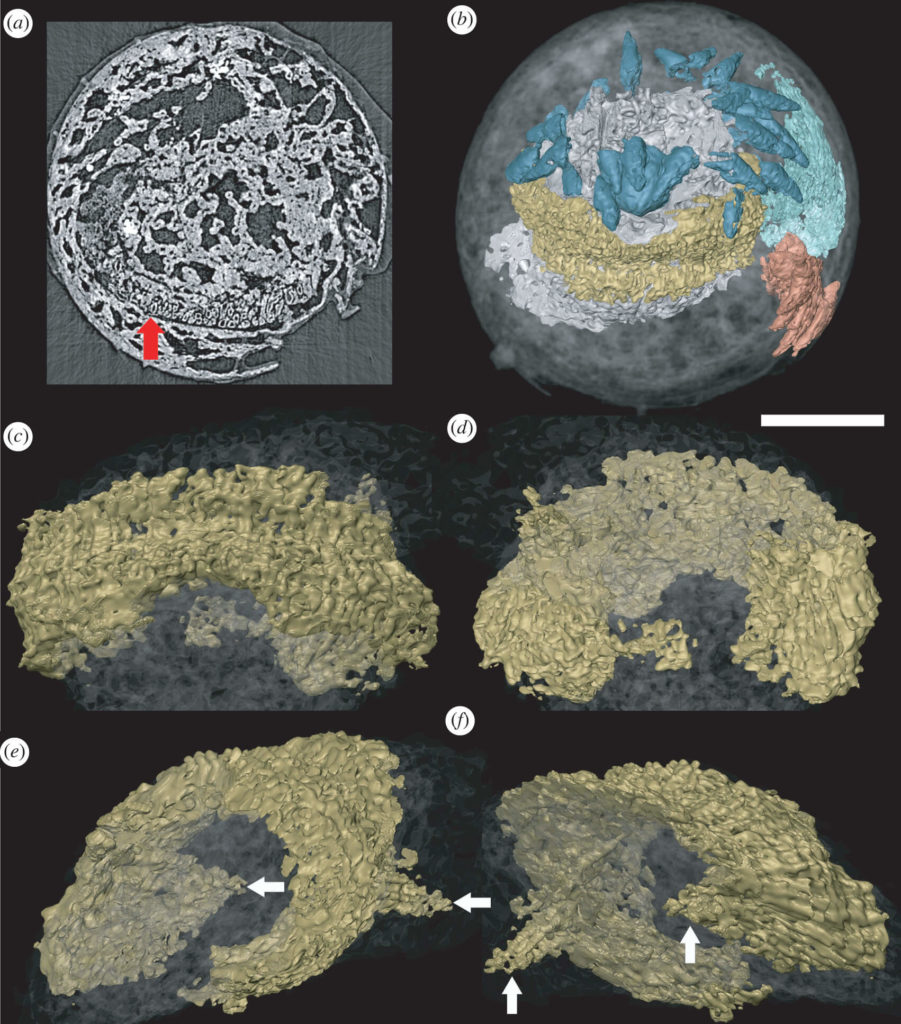Paleontologists from Peking University's School of Earth and Space Sciences have studied many fossils
 A 3D model of the brain (yellow) and pharynx (blue) obtained from the analysis of the fossil. Image: Xi-ping Dong et al., Royal Society Open Science
A 3D model of the brain (yellow) and pharynx (blue) obtained from the analysis of the fossil. Image: Xi-ping Dong et al., Royal Society Open Science
Age of Cambrian Fossilis about 500 million years. And this is one of the embryos of the marine worm Markuelia hunanensis, related to modern priapulids, so named because of their resemblance to the human penis. Researchers have found many preserved embryos of ancient worms, at various stages of development, but so far not a single adult is known.
An unusual find was made in the fieldfossils in the western province of Hunan in China. Tiny embryos, the size of which does not exceed 0.5 mm, were preserved inside the limestone slab. Scientists dissolve the mineral with acid to extract the minerals "grains".
 An X-ray reconstructed model of a worm's brain. Image: Xi-ping Dong et al., Royal Society Open Science
An X-ray reconstructed model of a worm's brain. Image: Xi-ping Dong et al., Royal Society Open Science
After being released from the limestone, the embryosresearched at a particle accelerator in Switzerland. Its powerful X-rays can take pictures of tiny worm embryos. The sample rotates inside the beam and at the same time creates more than 1.5 thousand pictures of the remains from different angles, the scientists explain.
Usually, as a result of such an analysis, scientistsget only an image of the animal's tough outer shell, but in this case they were lucky: this embryo had a clear, organized donut-like structure in the head. Comparing the data with existing related species, the scientists concluded that this structure is the remains of a petrified annular brain of an animal. Moreover, other muscle-like structures have been identified in the worm's tail.
The researchers note that this is the first timewhen petrified nervous tissue is found in ancient Orsten fossils. The remains of this period are preserved in limestone by replacing animal tissue with calcium phosphate. It is believed that this process only preserves the outer casing and not the soft tissues. The new discovery shows that this is not always the case, which means that other finds containing fossil internal organs may be hiding in museums, the scientists conclude.
Read more:
Catapult launches NASA satellites into orbit
A giant magnetic storm is approaching Earth
Giant 'scar' on Earth's surface shown from space